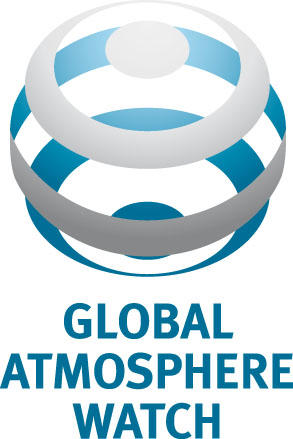Development of Standards for the World Meteorological Organization, Global Atmosphere Watch Program
Summary
The presence of volatile organic compounds (VOCs), which include hydrocarbons, monoterpenes and oxygenates, in the atmosphere has become important to climate change assessment studies due to their role as precursors to ozone production, particulates, and oxidizing capacity. To accurately determine the concentration trend of these VOCs and to relate measurement records from many laboratories and researchers, it is important to have good calibration standards. Several National Metrology Institutes worldwide have been developing primary and secondary reference gas standards at the nmol/mol level. The Gas Metrology Group at NIST has developed a suite of primary standards containing several key hydrocarbons covering a concentration range from (50 to 5000) pmol/mol. Additionally, standards have been developed and prepared in the (2-250) nmol/mol region for several key monoterpenes, resulting in NIST being accepted as the Central Calibration Laboratory (CCL) for monoterpenes for the World Meteorological Organization (WMO).
Description

Non-methane hydrocarbons (NMHCs) are emitted into the atmosphere by many biogenic and anthropogenic sources that include automobiles and other transportation vehicles, biomass burning, and oceans. In urban environments in particular NMHCs are important because they are precursors and contributors to atmospheric photochemical processes leading to the formation of secondary photo-oxidants such as ozone (O3), particulates, and other oxidants that are major contributors to photochemical smog. Currently laboratories making measurements of these species in the atmosphere have no common source of standards. The WMO Global Atmosphere Watch (GAW) World Calibration Centre for Volatile Organic Carbon (VOC) requested that the NMIs provide standards of various hydrocarbons for use as calibration standards to assure consistent measurements among the laboratories making measurements of these species in their atmospheric monitoring programs.
Four major NMIs from the USA (NIST), UK (NPL), the Netherlands (NMi) and Korea (KRISS) agreed to collaborate and develop standards. NIST is the lead institute for developing terpene standards and is also participating in standards development for hydrocarbons, oxygenates, and formaldehyde. The objective is to provide the WMO/GAW-VOC community with stabile, traceable standards for hydrocarbons, oxygenates, terpenes, formaldehyde, and a few other important VOCs.
Hydrocarbons in the atmosphere can vary greatly over the period of a year due to climatic conditions with concentrations below 50 pmol/mol. While the WMO/GAW-VOC measurement community typically want a 5 nmol/mol VOC standard that they can dilute down to part-per-trillion (ppt) levels, NIST believes that there should be a traceable standard at the low pmol/mol level to test the dilution method and assure that it is viable. The Gas Metrology Group at NIST has developed a suite of primary standards containing several key hydrocarbons covering a concentration range from (50 to 225) pmol/mol (ppt). The results show good agreement within the suite of standards. Research has been done to determine the accuracy of a cryogenic preconcentration system in which a nominal 5 nmol/mol standard is diluted into the low pmol/mol range to create a multi-point calibration curve. The pmol/mol standards are then analyzed and compared to the calibration curve. The results have shown some discrepancies between the dilution of the high concentration standard and the pmol/mol standards which raises questions as to the validity of the dilution method. Standards have been prepared by NIST at the nmol/mol region for several key terpenes, and these standards are currently being analyzed by other NMIs.
Major Accomplishments
- Participation in International Comparison (EUROMET 886) of VOCs at 5 nmol/mol
- Preparation of hydrocarbon and terpene primary gas standards
- Bilateral comparisons of hydrocarbon primary standards with NPL and NMi
- Bilateral comparison of terpene primary standards with NPL and NMi
- NIST has been accepted as the WMO Central Calibration Laboratory for monoterpenes
Associated Publications
1. Brewer, P. J., Kim, J. S., Lee, S., Tarasova, O. A., Viallon, J., Flores, E., Wielgosz, R. I., Shimosaka, T., Assonov, S., Allison, C. E., van der Veen, A. M. H., Hall, B., Crotwell, A. M., Rhoderick, G. C., Hodges, J. T., Mahn, J., Zellweger, C., Moossen, H., Ebert, V., and Griffith, D. W. T., "Advances in reference materials and measurement techniques for greenhouse gas atmospheric observations," Metrologia, 56, (2019).
2. Rhoderick, G. C., Cecelski, C. E., Miller, W. R., Worton, D. R., Moreno, S., Brewer, P. J., Viallon, J., Idrees, F., Moussay, P., Kim, Y. D., Kim, D., Lee, S., Baldan, A., and Li, J., "Stability of gaseous volatile organic compounds contained in gas cylinders with different internal wall treatments," Elementa-Science of the Anthropocene, 7, (2019).
3. Rhoderick, G. C., Kitzis, D. R., Kelley, M. E., Miller, W. R., Hall, B. D., Dlugokencky, E. J., Tans, P. P., Possolo, A., and Carney, J., "Development of a Northern Continental Air Standard Reference Material," Analytical Chemistry, 88, 3376-3385 (2016).
4. Kalafut-Pettibone, A. J. and McGivern, W. S., "Analytical Methodology for Determination of Organic Aerosol Functional Group Distributions," Analytical Chemistry, 85, 3553-3560 (2013).
5. Urquiza, M. P., Torres, M. M., Mitani, Y., Schantz, M. M., Duewer, D. L., May, W. E., Parris, R. M., Wise, S. A., Kaminski, K., Philipp, R., Win, T., Rosso, A., Kim, D. H., Ishikawa, K., Krylov, A. I., Kustikov, Y. A., and Baldan, A., "CCQM Key Comparison - Organic Solutions CCQM-K47 Volatile Organic Compounds in Methanol Final Report," Metrologia, 50, (2013).

